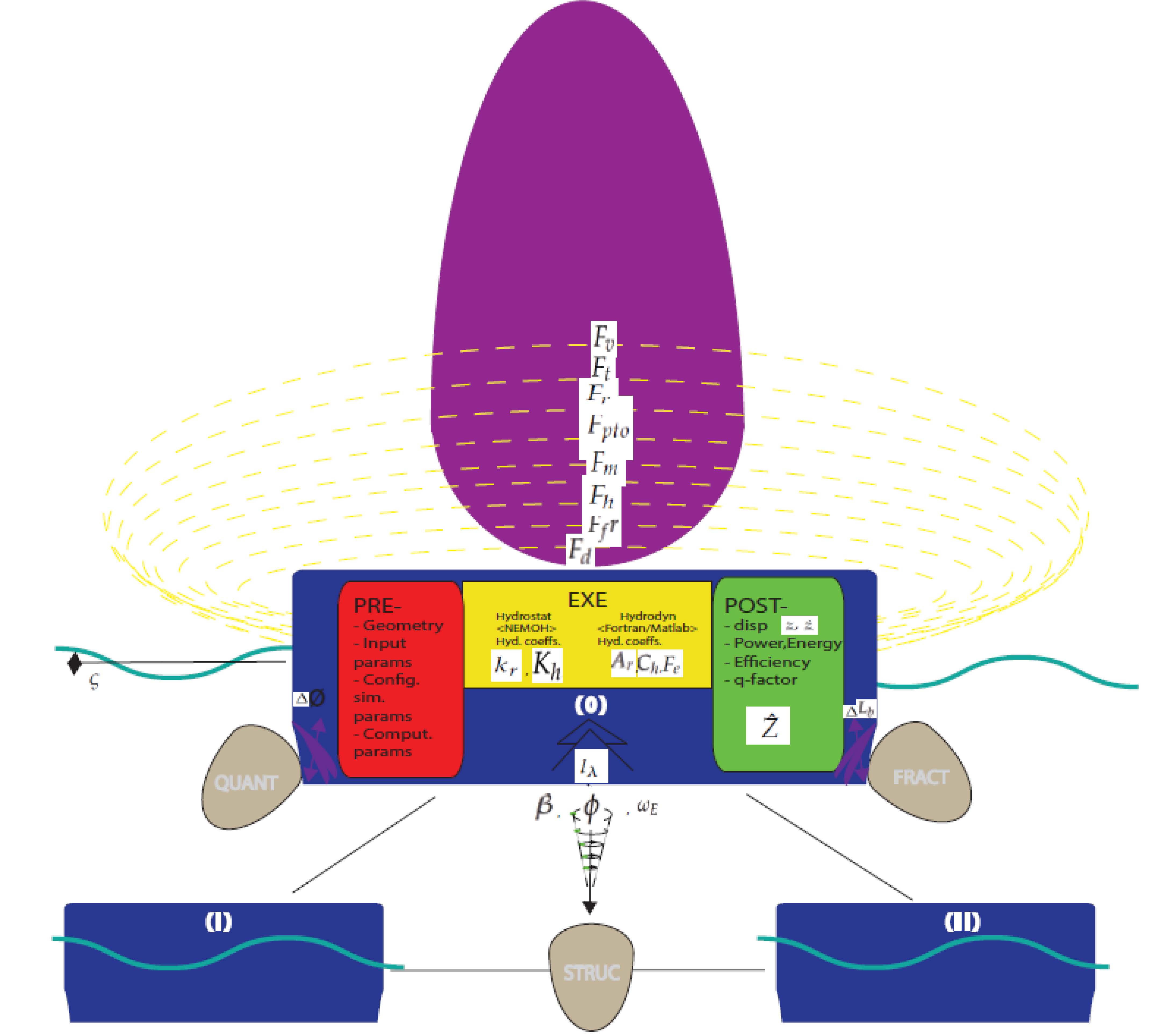This thesis completion works it out to deepen into diverse modeling techniques for Point Absorbers. A combined frequency-time domain model is conceived, designed and developed in Matlab with FoRtran as a base., leading to obtain physical variables of primary importance, namely position, velocity and power to Energy net balance relationships of absorption. Integration of different degrees of freedom with heave as main executable leads in turn to a single buoy motion focus. Acquisition of the needed hydrodynamic coefficients is provided though application of NEMOH & BEMIO solvers due to the Boundary Element Methodology. Initially, this Wave-to-motion model is validated through comparison with previous experimental results for a floating cone cylinder shape (Buldra-FO3). A single, generic, vertical floating cylinder is contemplated then, that responds to the action of the passing regular waves excitation. Later, two equally sized vertical floating cylinders aligned with the incident wave direction are modeled for a variable distance between the bodies. For both unidirectional regular and irregular waves as an input in deep water, we approximate the convolutive radiation force function term through the Prony method. By changing the spatial disposition of the axisymmetric buoys, using for instance triangular or rectangular shaped arrays of three and four bodies respectively, the study delves into motion characteristics for regular waves. The results highlight efficient layouts for maximizing the energy production whilst providing important insights into their performance, revealing displacement amplification- and capture width-ratios, while deriving in possible interpretations of scenarios related to the the known park effect. These terms are encompassed by the novelty of a new conceptual Post-Processing methodology in the field, which leads to obtain an optimal distance for the separated bodies with effective energy absorption in a regular wave regime. In conclusion, this computational excursion envisions and proposes potentials fields of study, which will surely enhance new connections and link this renewable energy form.

